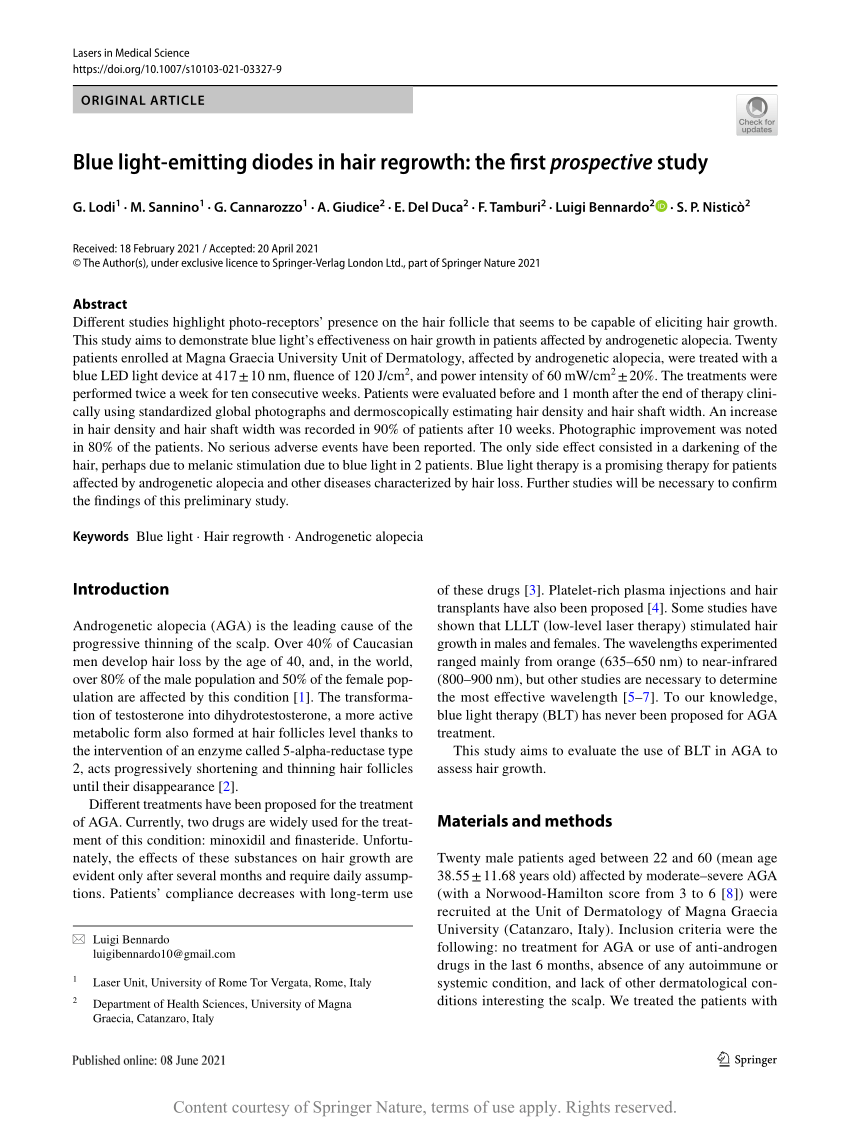waynakyo
Experienced Member
- Reaction score
- 464
Italian study...

 pubmed.ncbi.nlm.nih.gov
pubmed.ncbi.nlm.nih.gov
Abstract
Different studies highlight photo-receptors' presence on the hair follicle that seems to be capable of eliciting hair growth. This study aims to demonstrate blue light's effectiveness on hair growth in patients affected by androgenetic alopecia. Twenty patients enrolled at Magna Graecia University Unit of Dermatology, affected by androgenetic alopecia, were treated with a blue LED light device at 417 ± 10 nm, fluence of 120 J/cm2, and power intensity of 60 mW/cm2 ± 20%. The treatments were performed twice a week for ten consecutive weeks. Patients were evaluated before and 1 month after the end of therapy clinically using standardized global photographs and dermoscopically estimating hair density and hair shaft width. An increase in hair density and hair shaft width was recorded in 90% of patients after 10 weeks. Photographic improvement was noted in 80% of the patients. No serious adverse events have been reported. The only side effect consisted in a darkening of the hair, perhaps due to melanic stimulation due to blue light in 2 patients. Blue light therapy is a promising therapy for patients affected by androgenetic alopecia and other diseases characterized by hair loss. Further studies will be necessary to confirm the findings of this preliminary study.
Blue light-emitting diodes in hair regrowth: the first prospective study - PubMed
Different studies highlight photo-receptors' presence on the hair follicle that seems to be capable of eliciting hair growth. This study aims to demonstrate blue light's effectiveness on hair growth in patients affected by androgenetic alopecia. Twenty patients enrolled at Magna Graecia...

